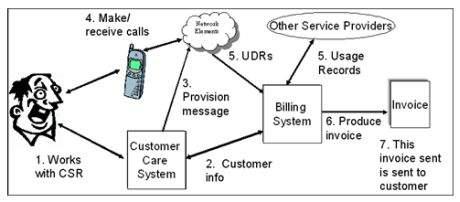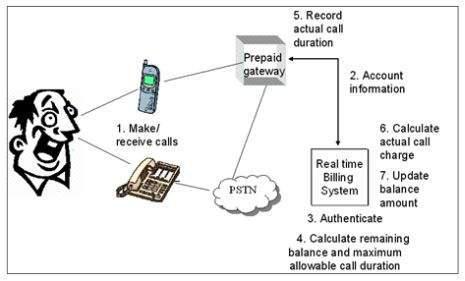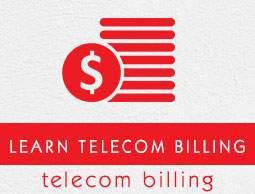Telecom Billing - Pre-Paid vs Post-Paid
Most of the operators provide two options to their customers, to go for a postpaid or a prepaid connection. A Postpaid as well as prepaid connections have their own advantages and disadvantages.
Usually, an operator will have 70%-80% customer base comprising of pre-paid customers and rest of the customer base will come from post-paid side. For an operator, it is always good to have more post-paid customers.
You might be willing to know about the differences between the two types of customers, services and systems. Let us list down a few major differences between the two −
Service Payments − This is the most important factor, which differentiates between two customer bases. Pre-paid customers make payment in advance before using the service, whereas post-paid customers use offered services throughout of the month, and at the end of the month, customer receives the bill to pay within the given time frame.
Charging & Billing − For pre-paid customer, it is required to charge the customer in real time for all the usage whereas post-paid customers can be charged at the end of the month.
Service Offerings − Post-paid billing systems provide more flexibilities in comparison of real time charging systems. For example, real time charging system is not flexible to maintain a complex business customers' hierarchy, where as a post-paid billing system can handle a customer hierarchy up to N level.
Support & Maintenance − An operator needs to give same at tention to both the businesses. If, for a pre-paid business, operator needs to have skilled manpower to control the operation, same time operator needs a great staff to handle post-paid customer's queries related to their charging, bills, and fixing operational issues.
Supported Network − A long time ago, the network of the prepaid and the postpaid connections were different. This used to invoke complaints that the prepaid connection would offer better connectivity than the postpaid or vice versa. This is the age of convergent billing and operators are running their business with the same network without compromising communication quality.
Post-paid Scenario
Network elements (like switches, SMSC) produce raw usage called Usage Detail Records (UDRs) or Call Detail Records (CDRs), which contain information required by the billing system −
Calling number (A number)
Called number (the number receiving the call) (B number)
when the call started (date and time)
Call duration
Call Type (MOC, MTC, etc., MOC stands for Mobile Originated Call and MTC stands for Mobile Terminated Call)
The above raw UDRs from network elements and also from other service providers are received by the billing system and the billing system converts these into a format understandable by the system. The above formatted/converted UDR is then guided to find the customer/account to which the call should be charged and then rate the event accordingly.
The above rated UDRs are then stored in the billing data store, and on the billing cycle date, the billing process picks up these rated UDRs and processes these and renders bill/invoice, taking into account, the payments, taxes, discounts, etc.
The customer then pays the bill and the billing system is updated with the payment details. Following is the diagram showing the above standard billing process −

Pre-paid Scenario
Steps involved in prepaid billing in brief are as follows −
When customer makes a call, prepaid switching gateway captures the calling number and sends the account information to the real time billing system.
Real time billing systems using the above information, authenticates the identity of the user, calculates the customer account's remaining balance using the rating tariff table and maximum allowable duration of the call, and sends this information to the prepaid gateway.
The gateway establishes the call.
During the call, gateway monitors the call so that the user do not exceed the maximum allowable call duration.
When the call is over, the gateway sends the actual call duration to the prepaid billing system, which then calculates the actual call cost and updates the account balance, decreasing the remaining balance.
The following figure shows the general prepaid billing scenario −

Prepaid billing process involves the following important steps along with account information gathering and updating account after the call is completed −
Authenticating − Authentication is the process of verifying that a user is who he or she claims to be. The user supplies a user ID and an authentication credential, such as a password. The system accepts these as inputs and verifies that the user is valid and has access to the system.
Authorizing − Authorization is the process of verifying what an authenticated user is allowed to do. Generally, Remote Access Dial In User Server (RADIUS) protocol is used to limit access to the system to registered and authorized customers.
Providing advice of charge (AOC) − This gives information about the actual cost of the call either prior to or after the event. AOC provides the ability of a telecommunications system to advice of the actual costs of the event either prior to or after the occurrence of the event.




